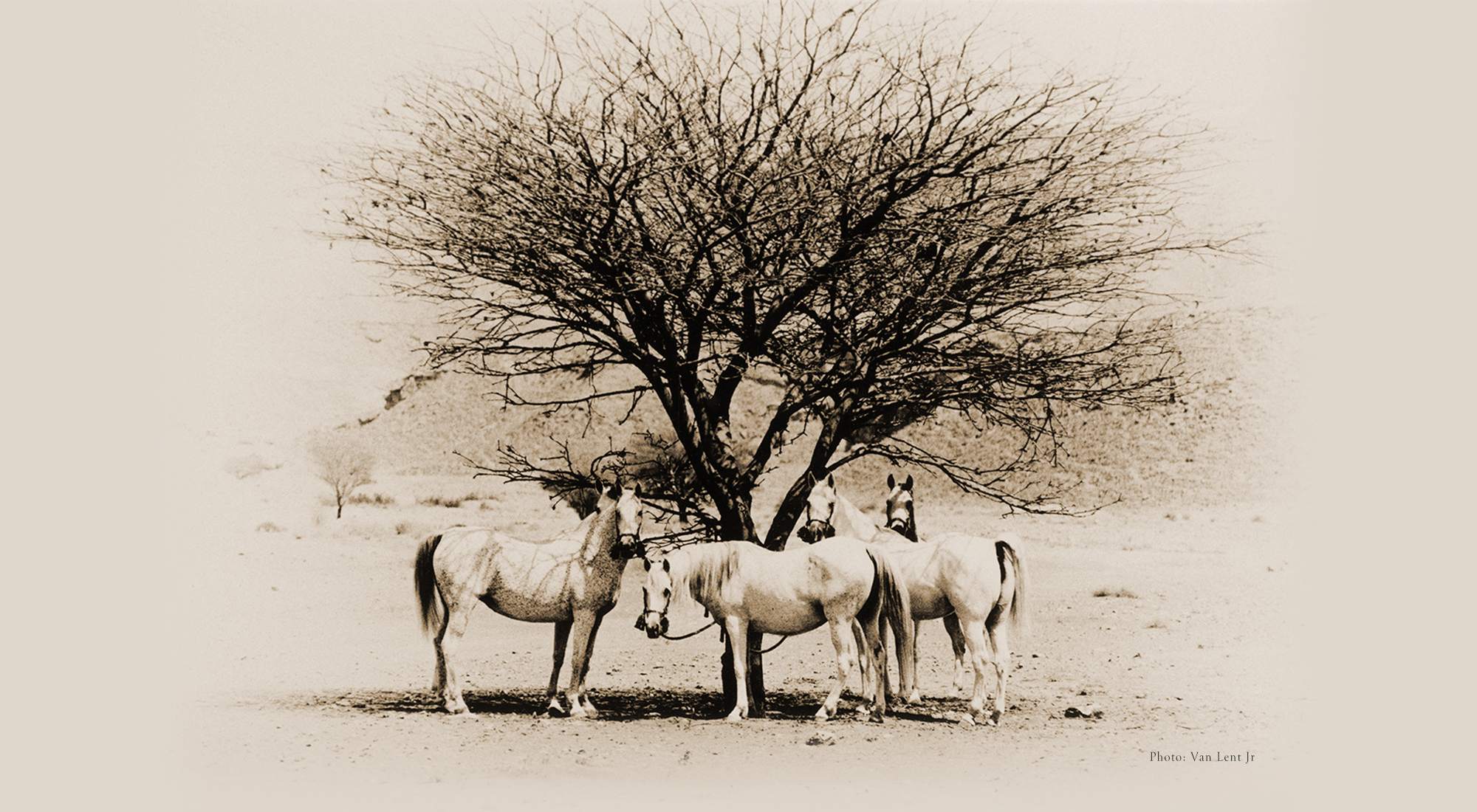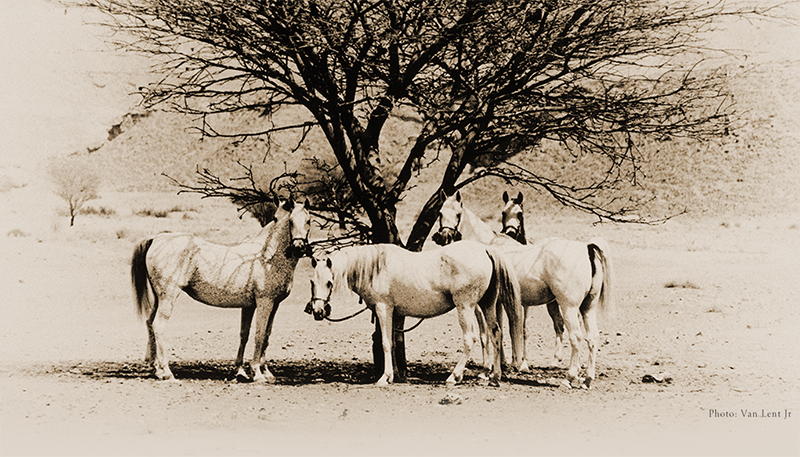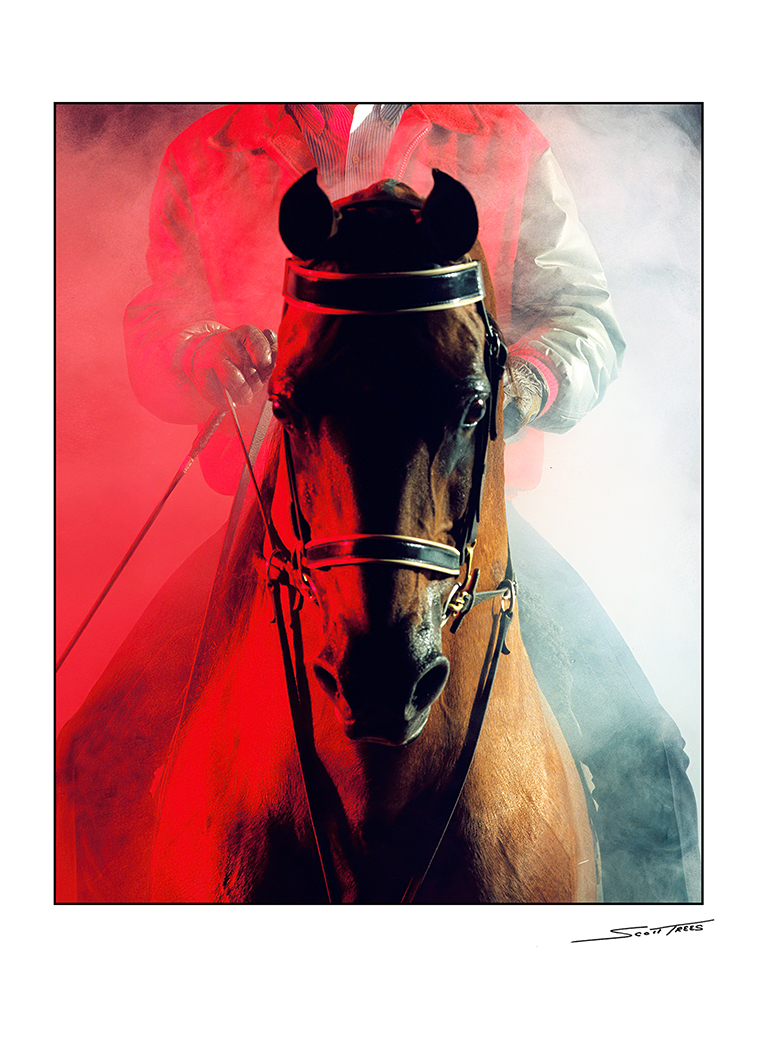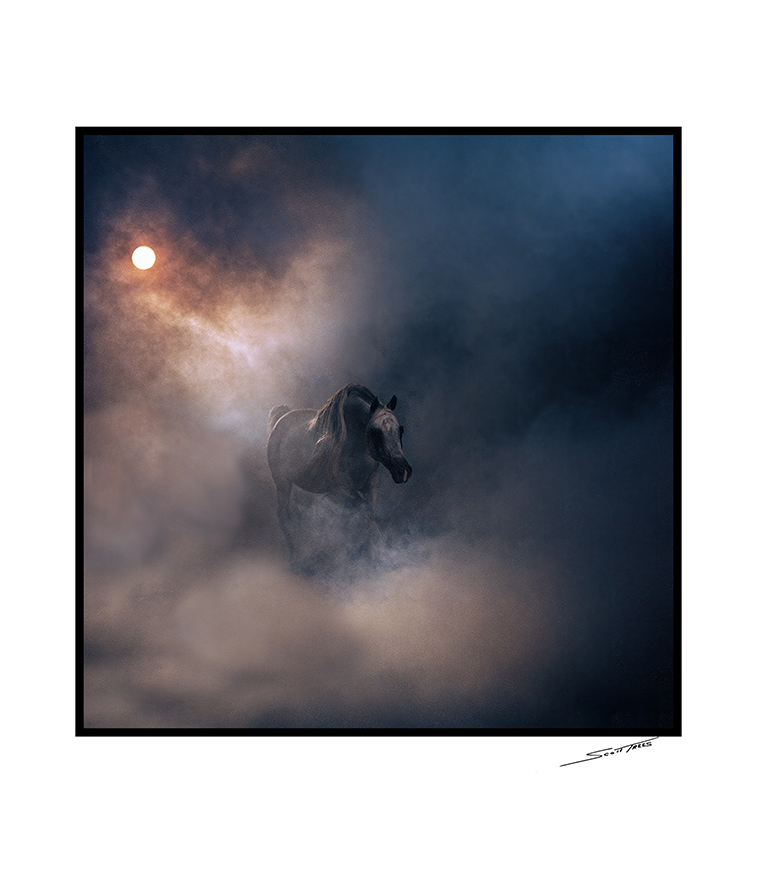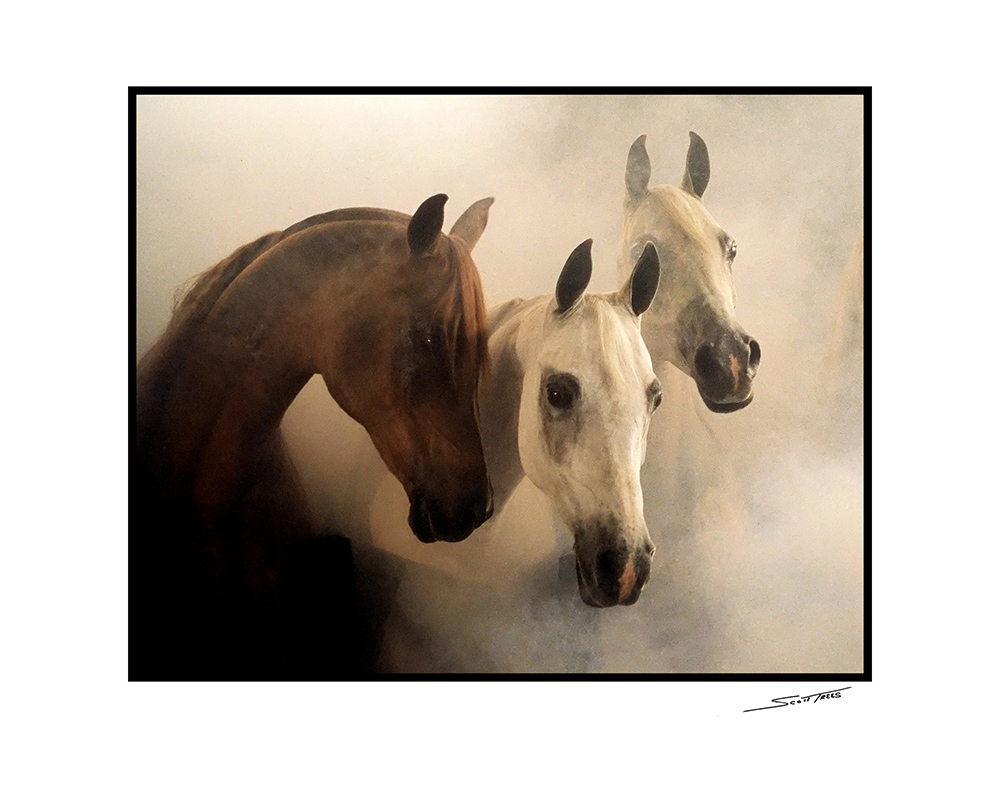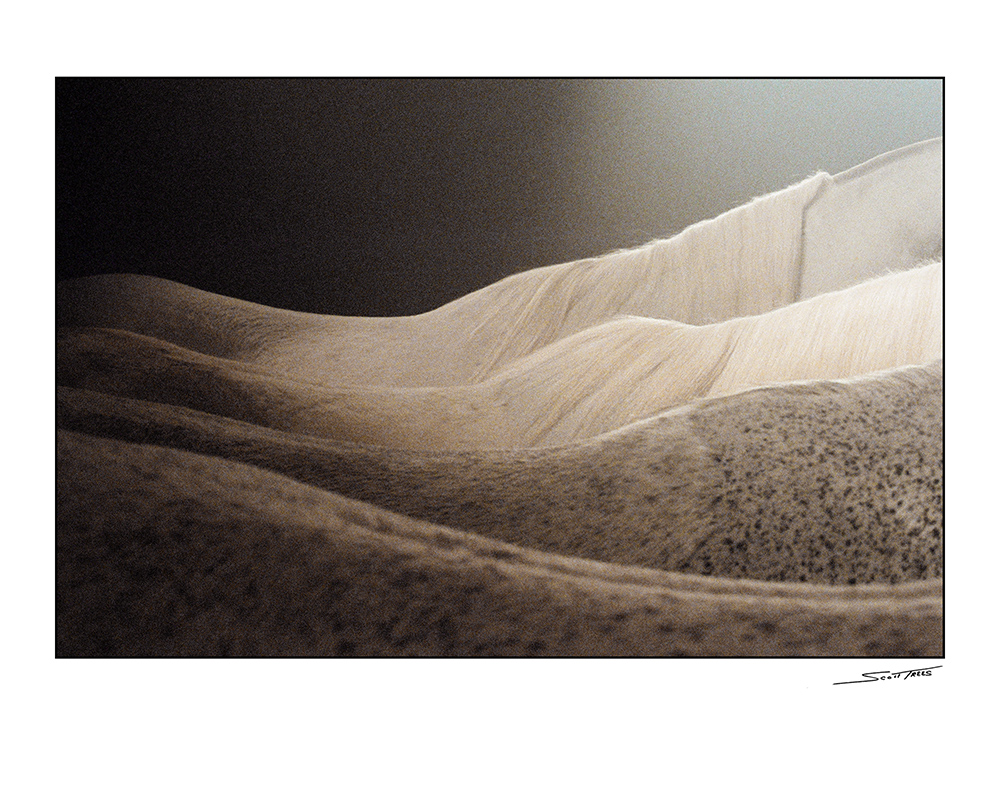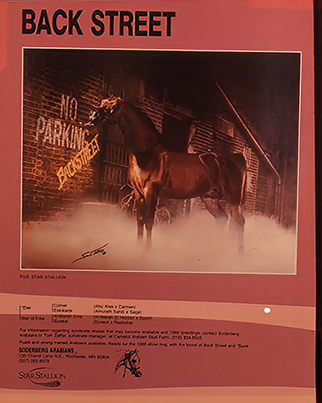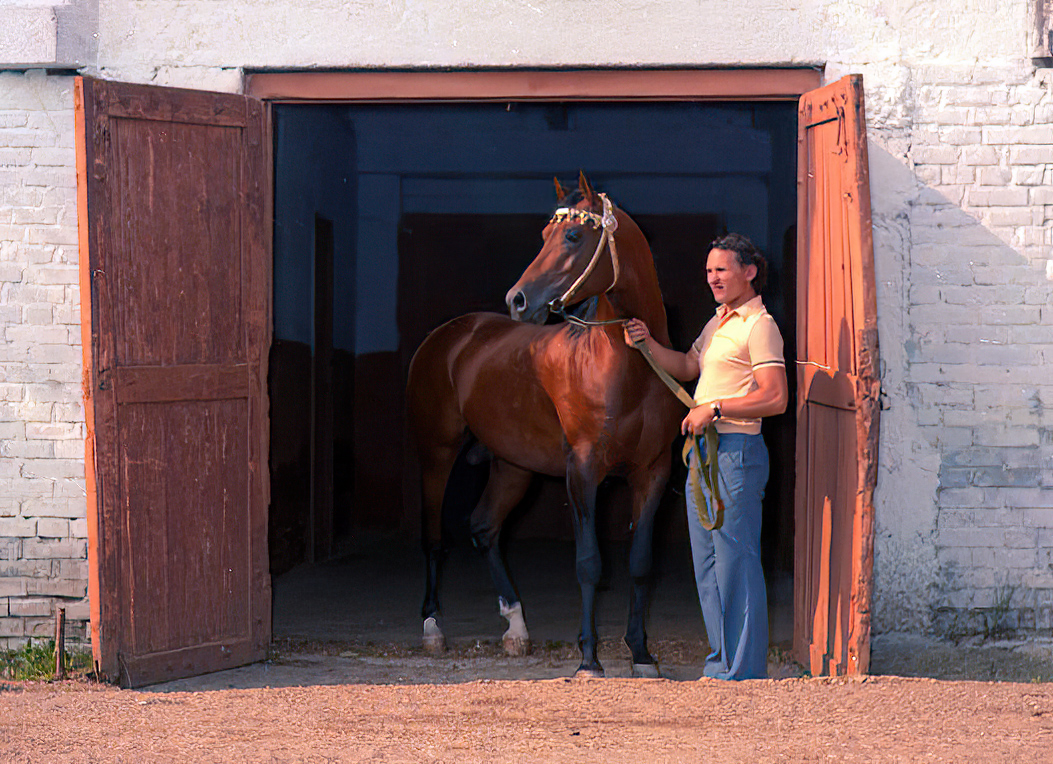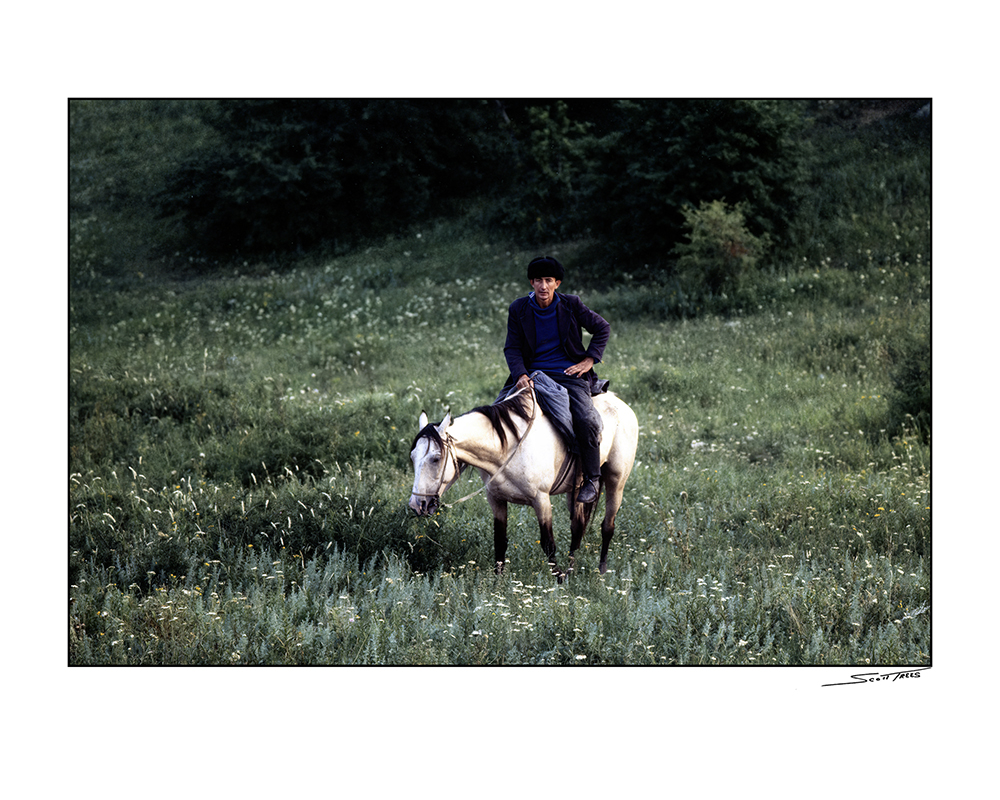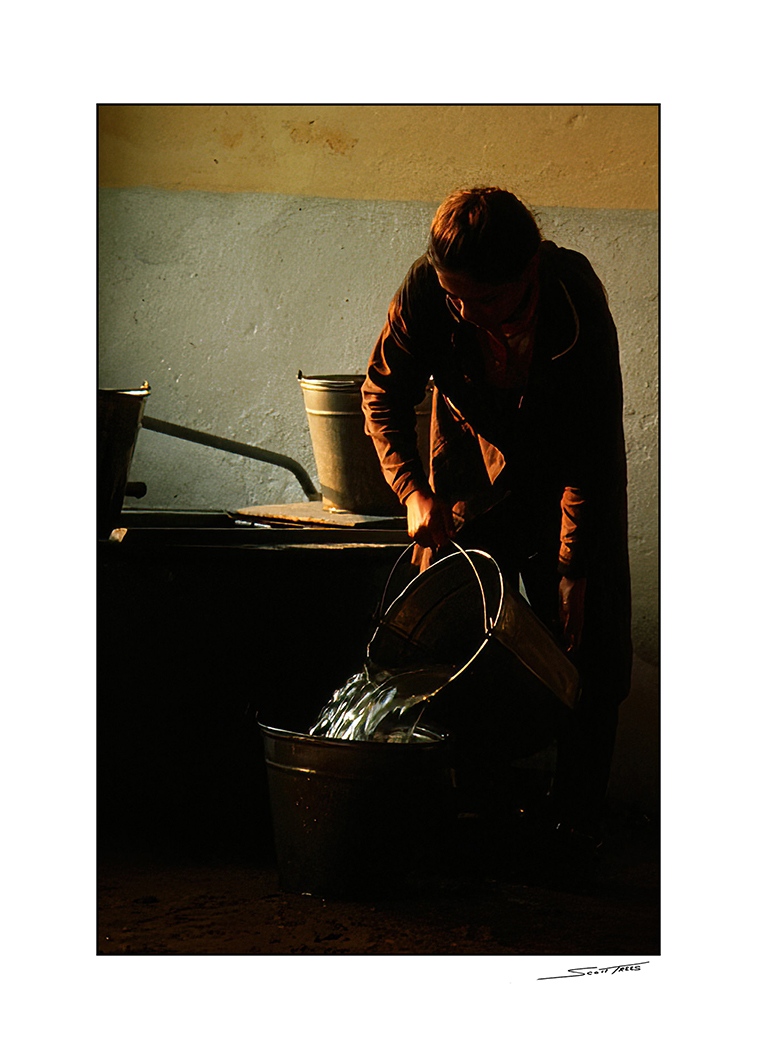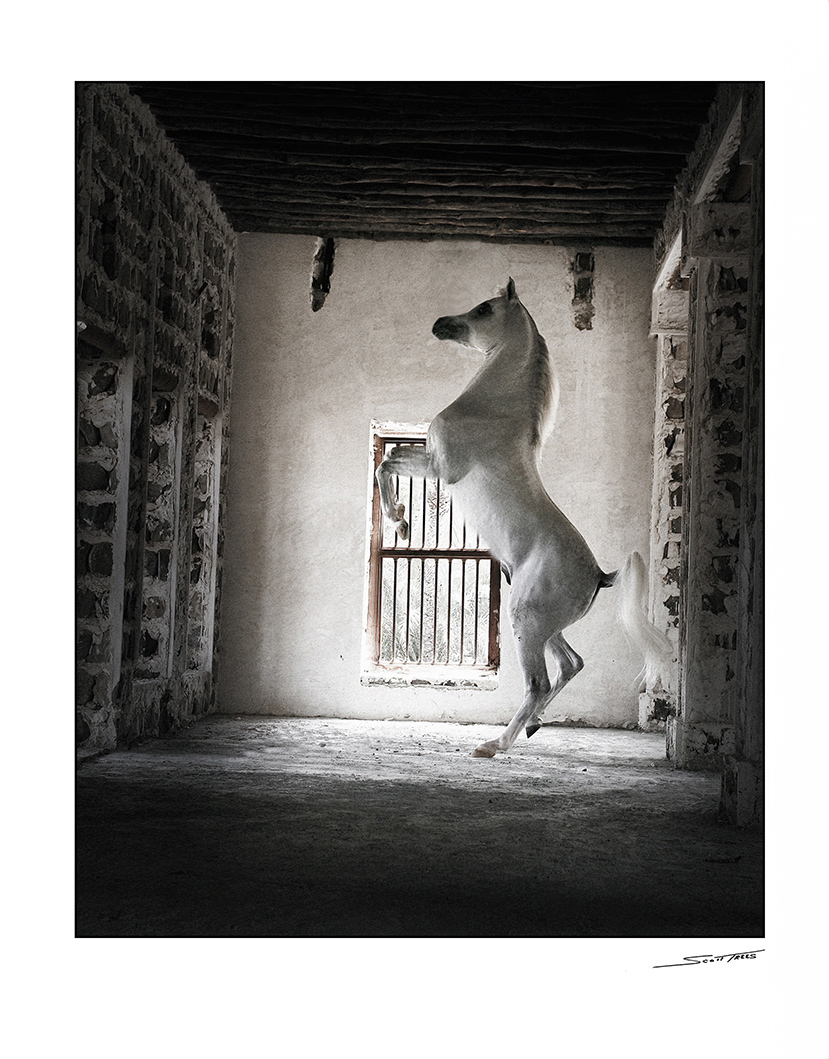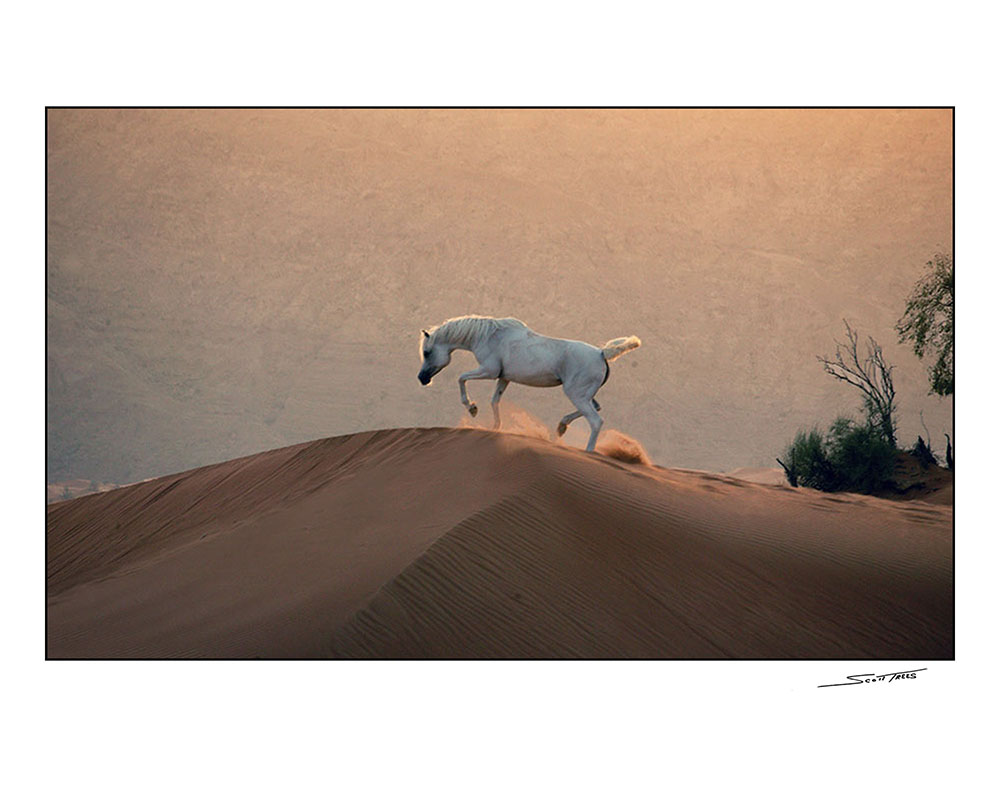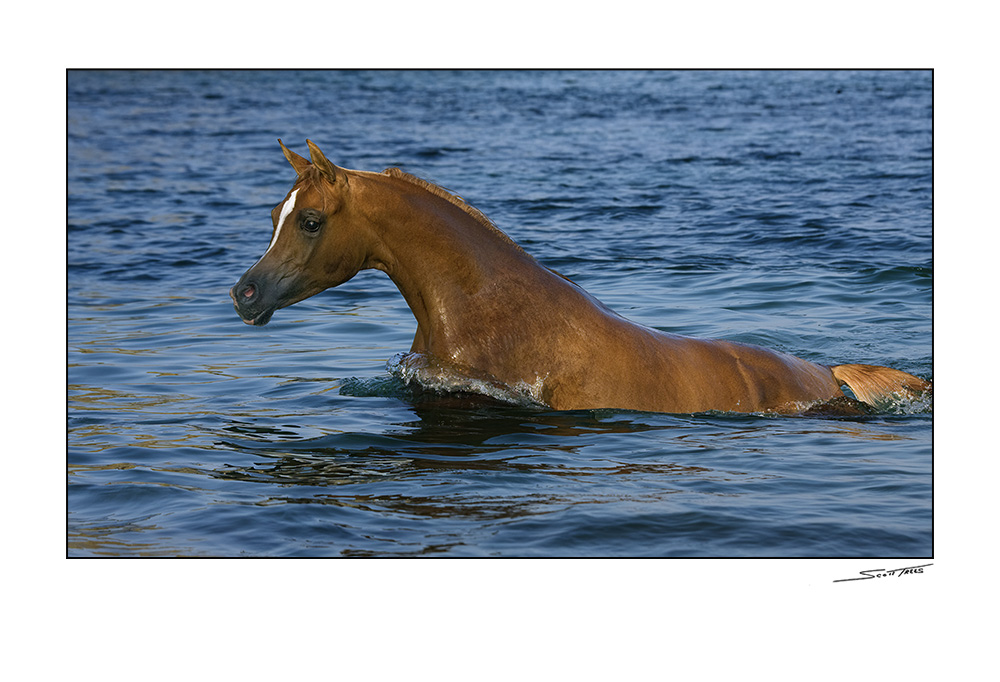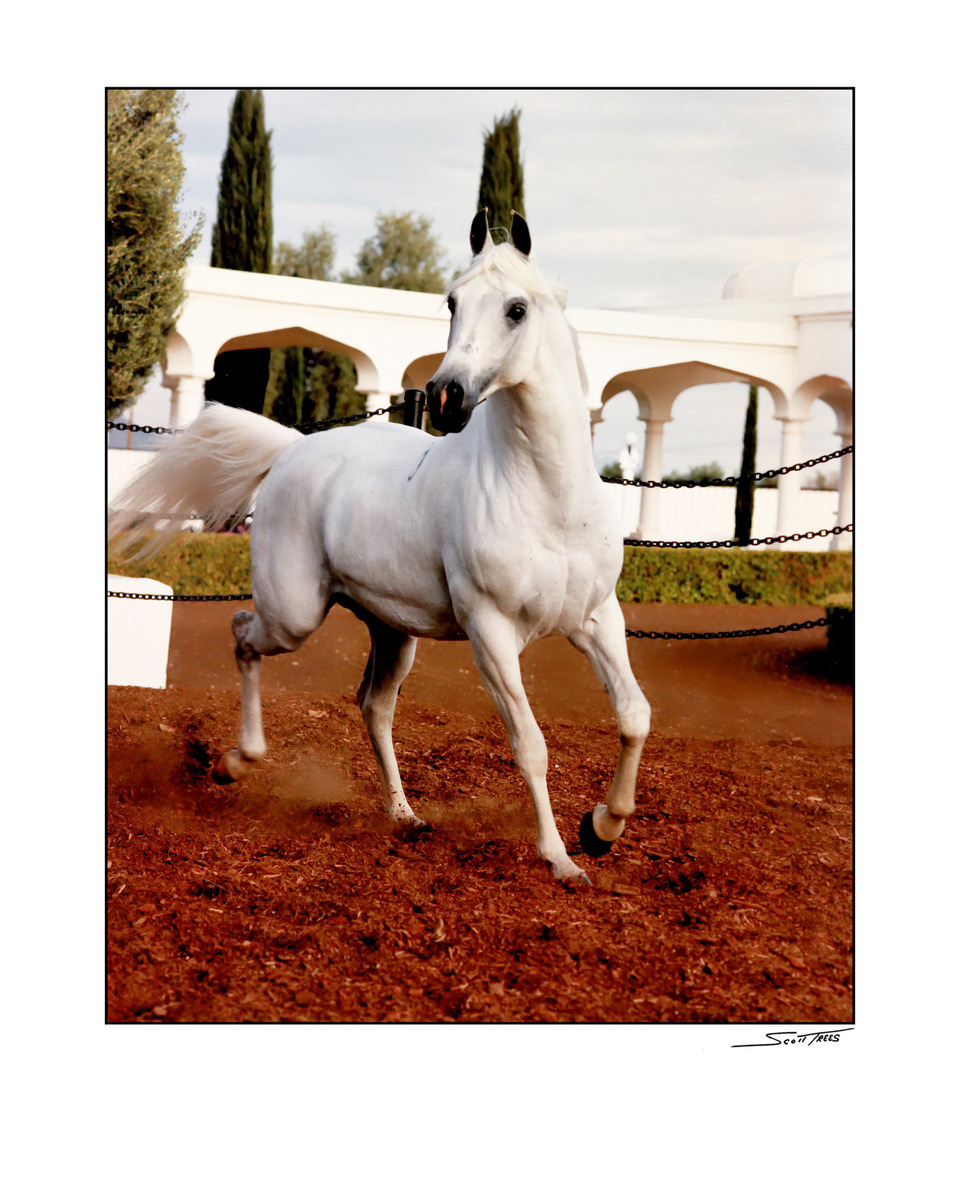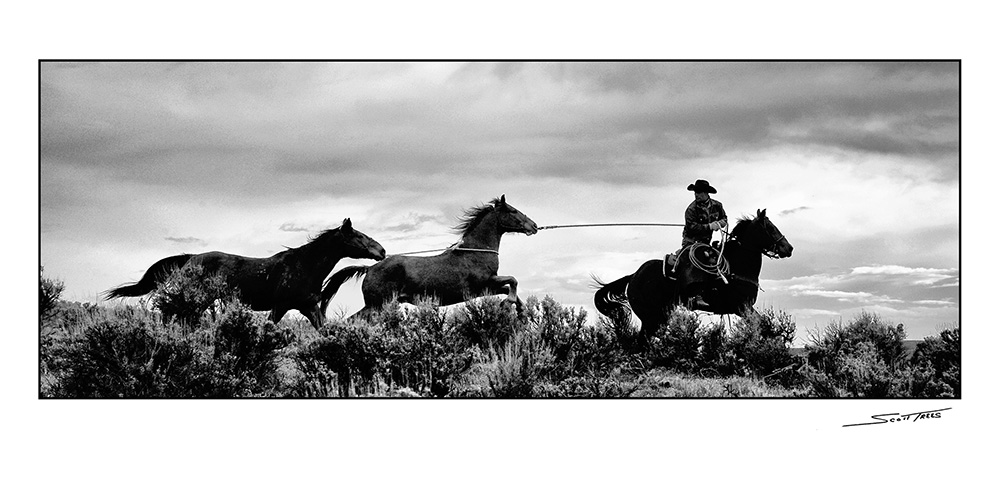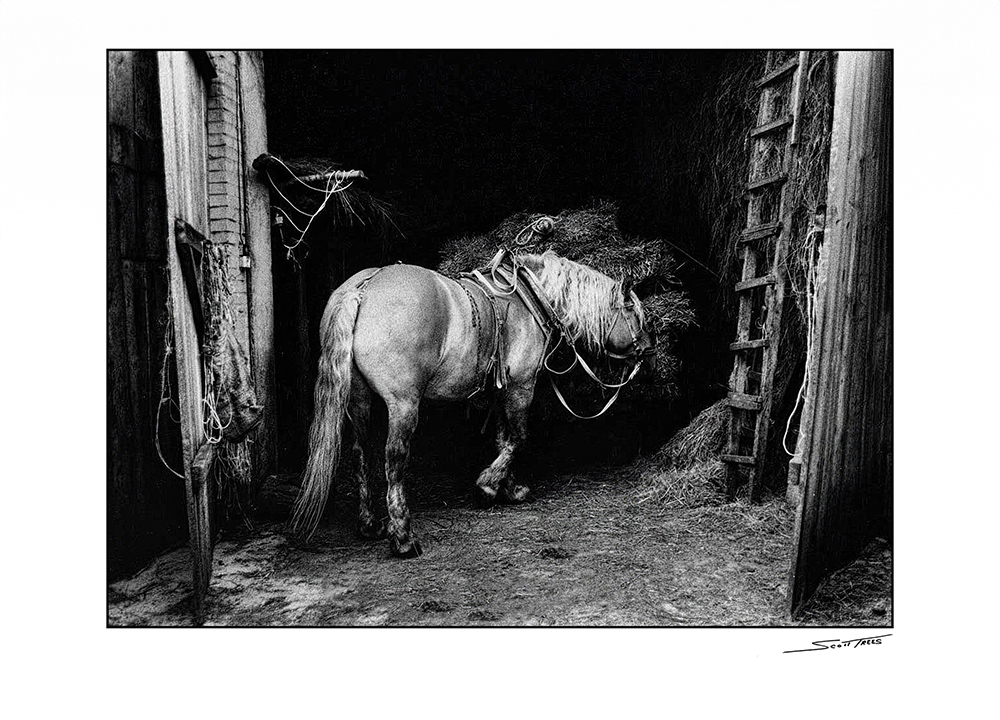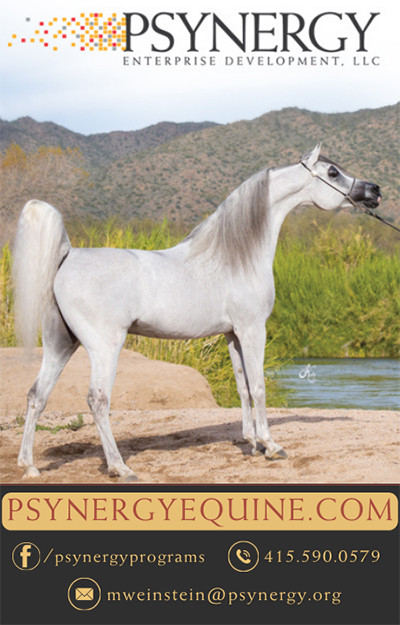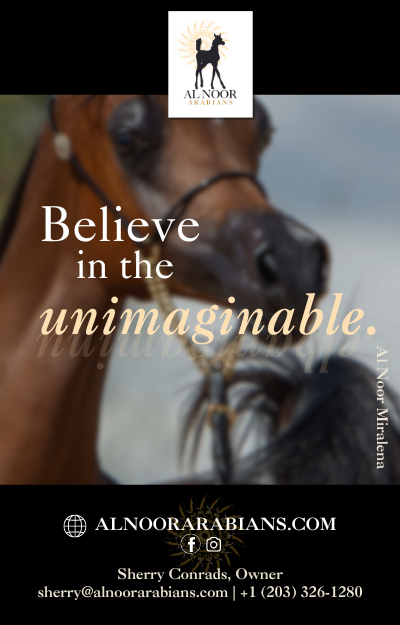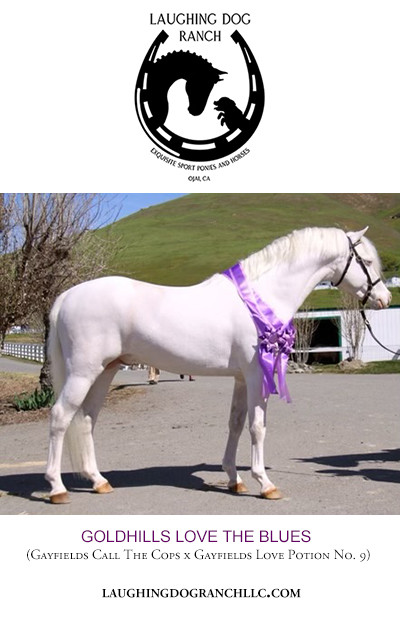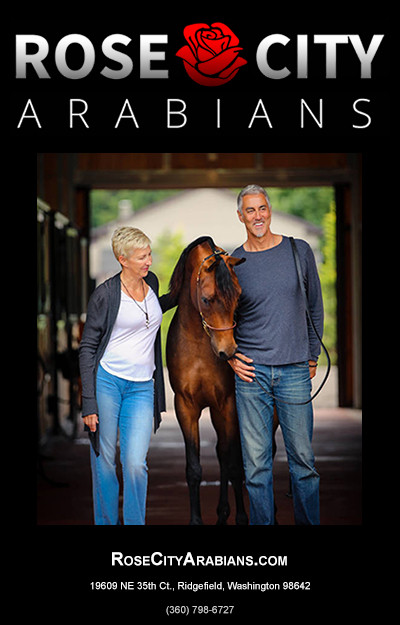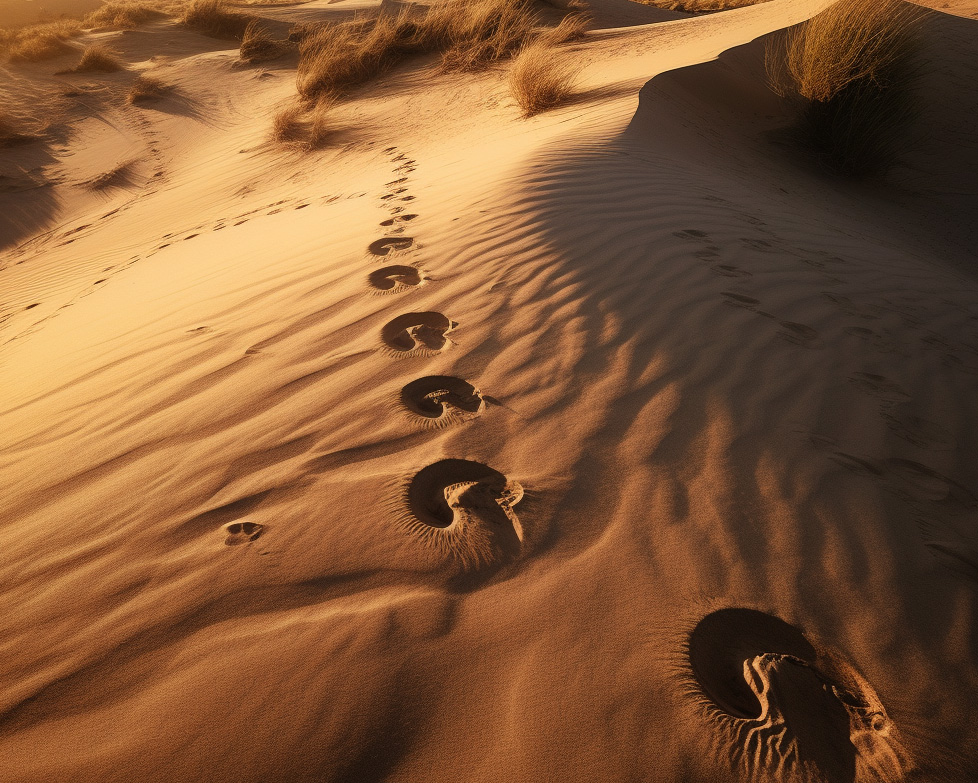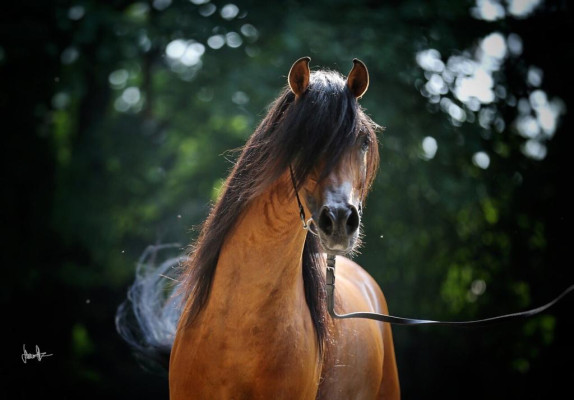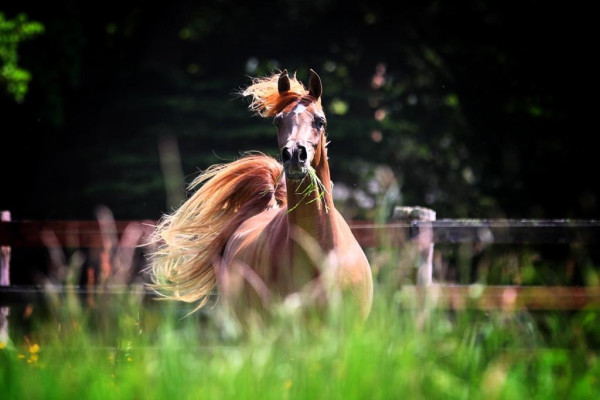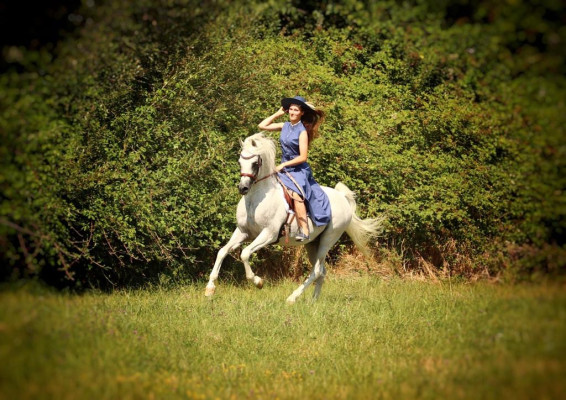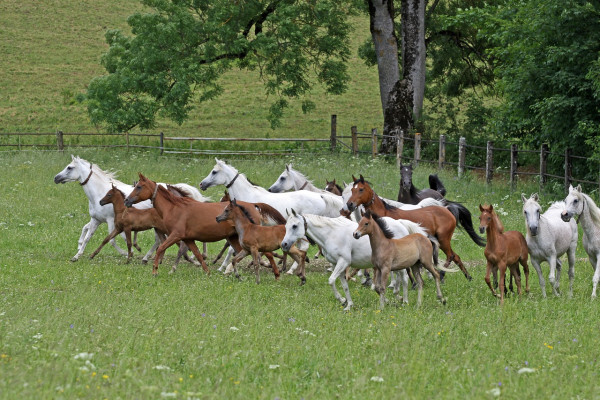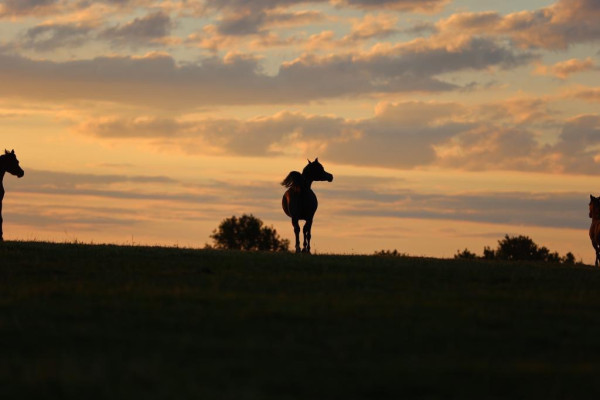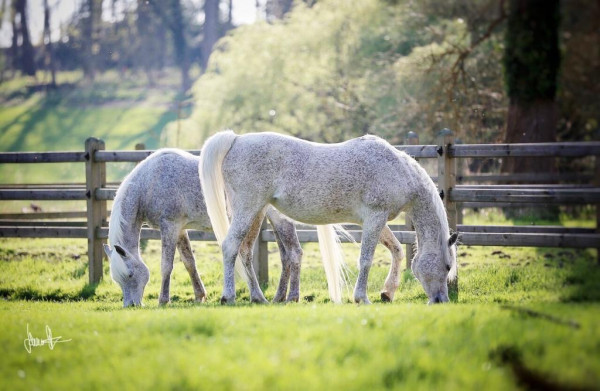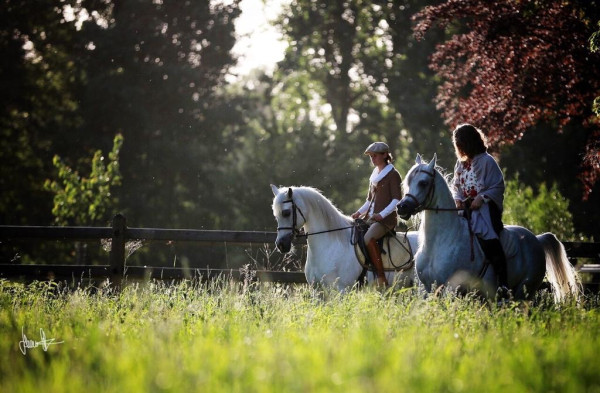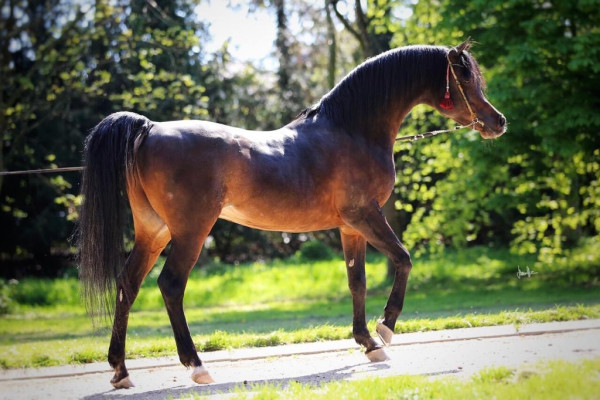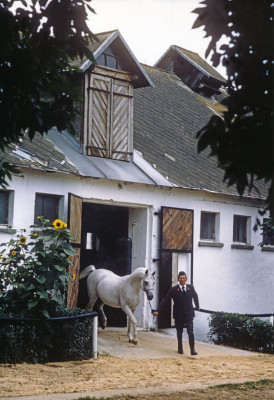A Visit with Scott Trees
by Denise Hearst
Scott Trees is among the great photographers of our breed, having made his entrance on the scene around the time that Johnny Johnston and Jerry Sparagowski were at the top of their game. "I grew up with horses in Colorado,” he says. "My Mom, Harriette Spencer, owned the World Champion Saddlebred Amateur Five-Gaited horse Beau Deluxe. When my Mom and stepfather got involved with Arabians, I began to have daily interactions with them and I realized that probably changed the course of my life. I grew close to one of our Arabian fillies who had suffered an eye injury. While caring for her, I began to understand how special Arabian horses were – their beauty, intelligence, and spirited nature forges an unbreakable bond with their human companions. My Mom had a an eye for a good horse and a deep understanding of pedigrees. They bred heavily along the Polish and Crabbet crosses, featuring *Serafix and *Muszkatela sons, Muskateer, Cavaleer, Buccaneer, and Traveleer, and a full sister named Seratella.”
When and how did you establish yourself as an Arabian horse photographer? Did you consider yourself a halter horse photographer or performance, or both?
When I was in college, I picked up a camera in earnest. I shot anything I could. I realized that this was not going to be an inexpensive hobby. So I got a part-time job in a camera store and started a party picture business for fraternities and sororities. It did quite well, and saw me through the three years of college.
After graduation with a degree in psychology hot in hand, along with the illusion of a graduate's wisdom, I purchased a small portrait studio with my party picture earnings. I knew nothing about business and had no mentor to teach me. I live by the philosophy of "jump in and learn how to swim."
I didn’t necessarily intend to photograph horses, but Polly Knoll heard I was doing some local shooting for my Mom and friends. She inquired if I would like to photograph a local show that was conflicting with her schedule. Little did I know that Polly’s request would lead to a five-decade career with Arabian horses.
I got my big break when shooting for Arabian horse owner, Bill Stokes, who also owned a huge production facility in Dallas, Texas. His marketing division was hired to produce the Lancer Arabians dispersal sale catalog. Lancer was an important Egyptian breeding farm of the era. Much to my joy, Bill sent me to take the photographs.
Mrs. Don Ford indicated that she was looking for “something different,” so I suggested that we turn the horses loose. This was not the typical “look” for an auction catalogue of the day, but she liked the idea.
I arrived early the next morning and told their trainer, Stan White Sr., (at the peek of his career), what I wanted to do. He shot me a quick sideways glance, conveying irritation, disapproval, and disbelief. He informed me that, “These expensive horses are NOT going to be turned loose!” I was certainly not going to cross swords with this respected horseman, so we started shooting halter shots.
That afternoon, at lunch, Mrs. Ford asked how things were going and I explained Stan’s position. Her reply was something along the lines of “Oh reeeallly?” indicating she would take care of it. That afternoon I was photographing the horses loose, with a rather aggrieved trainer.
The catalog was different from the norm at the time, and the sale was a success. More importantly the experience gave me a lot of exposure and a big boost. I started getting more private commissions for farm work. A worldwide client base followed, allowing me to pursue my passion.
Halter shots are necessary, but I prefer the beauty and romance of an Arabian horse running free in an in exotic location. I am always looking for expression in my photographs of horses, and I find that horses are much freer with their expressions when not tethered to a human.
What makes a “Scott Trees Photograph" distinctive?
I understand the use of light to create mood. That, and a good eye allowed me to create some memorable shots. That evolved to unique and challenging locations, shooting horses in commercial studios, at night with fog machines in back alleys, horses turned loose in rivers, Middle Eastern deserts, oceans and a lot of beautiful and exotic locations.
How would you describe your photographic style when it comes to horses?
Quite often people have told me my pictures look back at them. That’s because I look for emotion and watch the eyes and ears of a horse when shooting. My style tends to be dramatic and emotional. I endeavor to capture the essence, spirit, beauty and majesty of these beautiful creatures, freezing in time the brief moments of beauty and emotion these horses can convey. When it all comes together during a photo session, it is magical.
From whom did you receive the best advice or bits of knowledge along the way?
I was pretty much self taught with much of that learning coming from all the things I did wrong! That said, there were people in the business who gave me encouragement.
My most valuable mentor was my mother – a remarkable person, horsewoman, judge, and artist. She could create something out of nothing, and was constantly pursuing artistic endeavors. My artistic spirit evolved from watching and interacting with her. She also had a great depth of knowledge about horses. She was a Mom, but she was also my teacher and friend.
As mentioned, Bill Stokes gave me opportunities that had an impact on my career. And the great Johnny Johnston looked at my portfolio and told me to "keep at it, you have some talent."
I thought I knew how to “read” a horse until I did a session with the incredible horseman Murrel Lacey. He could read a horse like few people could, and that afternoon watching and working with him gave me tools I have used every session since Murrel was always reading a horse's body language. He could anticipate a horse's actions before they were executed. Working with Murrel was a master class in horse behavior. Those lessons had a great influence on my career. I always paraphrased the great hockey player, Wayne Gretzky, who said, "What made me a good hockey player is that I knew where the puck was, but more importantly, where it was going to be." I felt the same was true for me when photographing horses at liberty.
Although you were already an accomplished horseman in your own right, you were coming of age as a photographer in the U.S. in the late 1980s and 1990s – tell us about the mood and energy around Arabians and the show world at that time. And how did that relate to the kinds of photos that people were seeking?
Ahhhh the “Golden Years”... It was an era of high rollers and glitz. The world of Arabian horses became a dazzling playground of extravagance and allure. It was an exhilarating, exciting time to be in the Arabian horse scene. Every moment seemed to brim with endless possibilities. It was one hell of a ride.
This increasing awareness of the Arabian horse was in a large part due to Lasma putting their phenomenal marketing machine in motion. They started doing auctions in Scottsdale, with a day or two of horse presentations and parties before the auction. Soon others began picking up on the concept, but Lasma was the leader during a remarkable boom in the Arabian horse industry. It also didn’t hurt they had a rather prolific breeding program with a senior sire named *Bask.
Of course the Scottsdale show at Paradise Park, its distinctive palm trees in center ring, was the show to attend. Everyone would spend the day basking in the warmth of the sun watching beautiful Arabian horses showing in a variety of disciplines.When the classes ended everyone would rush to their lodgings, eager to transform into visions of glamour, donning elegant attire. Every auction night held the promise of a grand affair.
The Lasma auctions were spectacular. Entertainers like Wayne Newton, The Beach Boys, David Brenner, Sammy Davis Jr. and the Pointer Sisters, to name a few, opened the auctions, setting the stage for what was to come – beautiful high-stepping Arabian horses, groomed and prepared to the max, trotting across the stage, being auctioned for significant sums of money. It didn’t hurt that tax laws were quite favorable for investing in limited partnerships during that time.
The magazines, especially Arabian Horse World, were huge, resulting in strong demand for promotional photographs. During this time, thanks to a number of people, I created some of my most memorable images while living the dream of being a professional photographer.
When the tax laws changed unfavorably to the equestrian world, the market for Arabian horses experienced a dramatic plunge. Of my top ten clients in 1984, only half of them were still in business in 1988.
Most memorable photo shoot? Most disastrous?
I have been fortunate to have a lot of memorable sessions, I will start with the most disastrous one: a session for Beaver Dam Farms in Colbert, Georgia, an Arabian horse farm owned by the singer, Kenny Rogers.
When I met Kenny in his barn he asked if I had any ideas, and I replied that I had always wanted to shoot a horse in the woods at night with fog, leaving out one tiny fact... I had never done one before!
The next night there were big bright lights and a fog machine awaiting my arrival at the selected location. However, the lighting was for motion pictures. This was a problem because photography films of the era were slow and it took the flash of a strobe to really freeze motion. I had a terrible night and nothing seemed to work. When I told Kenny about my epic failure, I just knew my career was going to be over. Fortunately, he was more than generous and said, “Not to worry, try something else."
Fortunately other “experimental” shoots were more successful. One was with Don DeLongpre on Barbary – I consider the photograph taken that night to be one of “those” pictures. Another was the studio session for Baywood Park of the stallion, *Gokart (Partner x Gomora). I took the pure white stallion into a commercial cove studio with an all white backdrop. The idea was to shoot him for a New Year’s ad with white balloons floating all around him. He was incredibly patient while we taped helium balloons on a white string to the floor all around him. He walked forward, getting strings wrapped around his legs. He stood there and looked at me like, “Would you please get these damn things off me?” It, too is one of “those” shots. When that photo was published it caused quite a stir and gave my career a tremendous boost.
If you could discuss Arabian horses with anyone from the past or present, who would it be?
My mother, Murrel Lacey, Allan Morgan, and Bill Harwood. They all worked with Mom in the early days and I think we would laugh heartily at some wonderful memories.
And Nat Gorham, because that man had his pulse on the business side of industry like no other.
You have traveled to photograph horses in England, Russia, Poland, the Middle East and Mongolia, and all over the U.S. – where were your favorite horses? Where else are you longing to go to photograph horses?
I grew up with Polish Arabians so visiting the Polish studs in 1993 was a special treat. The fascinating history of those barns, combined with the beauty and spirit of the horses themselves was moving. The surrounding village exuded a warm and welcoming spirit, with its inhabitants embracing visitors with open arms which made for interesting black and white photographs.
Communist Russia was quite an experience because it was the peak of the cold war in 1983. I was asked by Michael Weinstein of Aries Arabians to photograph the newly purchased stallion *Menes. We were there for about two weeks at the Tersk breeding farm in the southern Caucasus mountains.
I went there not knowing what to expect, and left with an understanding that for the most part people just want to get along, have a roof over their heads, food on the table, and a safe haven for their family. Unfortunately, politics and religion over the centuries have made that desire much more difficult for some than others.
I spent many years in the Middle East and had an opportunity to create some interesting photographs in the desert. Jane Kadri invited me to come to Qatar in 1991. My first trip to Qatar was memorable, as I was photographing the endurance race from a helicopter. It had rained heavily three days before, so it was something to see the 30 riders and 100 chase vehicles.
After recovering from cancer in 1994, Eileen Verdieck brought me back in 2001, and for the next 13 years I returned to Dubai for the season.
I would love to go to Tibet, and return to the Tuscany valley. I am working on a creating a photo tour for both locations next year, as well as several others.
Describe the one horse you've photographed who has come closest to your ideal of the Arabian horse. Your favorite horse to photograph?
In terms of the ideal Arabian horse for me it would be *Haracz (Palas x Harmonia). He was a beautiful and charismatic stallion with a magical air about him. I always felt his energy was the closest to what I imagined a unicorn’s would be.
In terms of a favorite horse to photograph there were two, Fame VF (Bey Shah x Raffoleta-Rose) and Huckleberry Bey (Bay El Bey x Taffona). I couldn’t take a bad photograph of them. They made me look good! I always said that if Fame were human, all heads would turn when he entered a room. He had a powerful presence and a kind energy that said “Look at me...” he was a real showoff.
Huck was probably the horse that I connected with best during sessions. We worked well together, and had an innate understanding of one another. Huck also liked to play, and I took pictures of him in a variety of situations. I always had fun with him.
Did you ever shoot a not-so-lovely horse who looked fabulous in your photo? Or a gorgeous horse that you did not manage to capture?
The answer is yes to both questions. No, I won’t tell you who.
What do you consider your best shot that few people have seen?
A black and white shot of a draft horse slowly walking by a wagon full of hay that he had pulled. The moment when he reached out to take a bite of hay is one of my personal favorites.
In your experience of owning and photographing Arabians, what are a couple of the most outstanding events? Explain, in your soulful words, what the Arabian horse means to you.
Arabian horses allowed me to travel the world, to meet and photograph interesting horses and people. I consider Arabian horses to be the high fashion models of the horse world. They definitely lend themselves to my style of shooting. I had the opportunity to see, interact with and photograph the best Arabians in the world.
This life-long connection with Arabian horses shaped a career and my identity. It has influenced my journeys in profound ways. The more I immersed myself in this world, the more I discovered its power to transcend language and connect with people from diverse backgrounds.
It's been a great ride and I plan on staying in the saddle as long as I can. I am fortunate to be healthy and still enjoy trying to capture the beauty of the Arabian horse. At 73 I have slowed down a bit, but am happy to shoot for anyone who likes my style.
As I always say, "you will know I am dead when you wave a camera under my nose and I don’t quiver…"
Barbary (Bay El Bey x Balalinka), owned by Mike Nichols
Trainer Don DeLongpre expressed a desire for a unique English pleasure photograph with him riding Barbary. The Barbary jackets were red, athletic-style with grey leather sleeves. My idea was for Don to wear his Barbary jacket as he trotted through a wall of fog with one side bathed in filtered red light.
On Barbary’s first pass through the fog, he was not expecting me to be on the other side! Caught His eyes popped open and ears pricked forward, resulting in an image that would have a significant impact on my career.
The funny part is, Don didn’t like the photograph until I showed it to him as a 30" x 40" print. When he saw that he exclaimed, “OK, now I see it!”
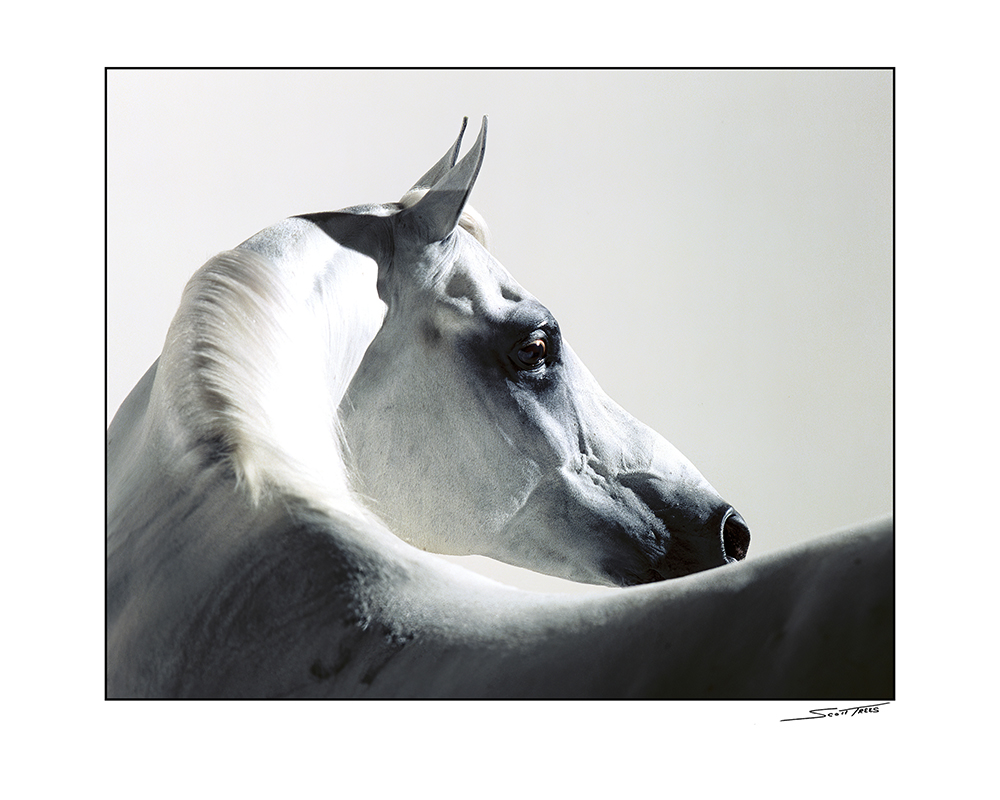
*Gokart (Partner x Gomora), owned it Blommerod Stud.
The idea was a white horse against a white background. *Gokart was the perfect horse. I rented a large commercial photography studio with controlled lighting and a solid white background, covered the floor in rubber mats and walked him in.
Taking a break from shooting, the tease horse, also brought into the studio, was walking outside past an open door. *Gokart turned to look, I yelled to the handler, “Stop! Don’t move!” and took this shot. It became one of my more famous images, often copied, never matched...including by me. This shoot was for Baywood Park.
I did a lot of notable work with Eileen Verdieck of Imperial Egyptian Stud. The following three images resulted from one incredible night of shooting.
This set was built inside their arena. I was shooting along with a 16mm film crew. This was the first time we turned Ansata Imperial (Ansata Ibn Sudan x Ansata Delilah) loose, and it made for an exhilarating scene. It helped when the fog dissipated a bit, with a studio light glowing like muted sunlight. What you don’t see are the 16 people hidden throughout the set that made this photograph possible.
During that same Imperial shoot, we built a series of trailer-like dividers to contain individual mares, none of which were particularly fond of one another. The mares in this shot – all Sameh daughters – were *Serenity Sonbolah (x Bint Om El Saad), *Fawkia (x Mamlouka), and Serenity Sabra (x Shahrzada). The shot was going well until *Fawkia tired of Sonbolah, and lunged at her. All hell broke loose. I managed to fire off this one shot which highlighted the primal strength of the species Equus.
Another setup used four different mares. As I was heading outside for a moment, I saw this image and thought, “That looks interesting,” and I took one quick shot of the mares’ backs. I had no idea it would turn out the way it did. When blown up as a super large print, it looks like a subtle landscape of serene dunes.
Back Street (*Eter x Star of Erka), owned by Soderberg Arabians
The concept for this ad was capitalizing on the name Back Street. A street or alley at night would be perfect. We located a suitable location in an alley, contacted the city powers that be, and rented it for six hours one evening.
It was going well, when the art director, Barb Klausner, in a genius impromptu move, spray painted his name in yellow on the back wall – it absolutely made the shot.
What we didn’t know was that the alley was behind a popular nightclub. During band breaks, a lively crowd poured into the narrow alleyway to observe the curious scene. It grew to the point we had to get more policemen for crowd control! They were having a great time, and so was I.
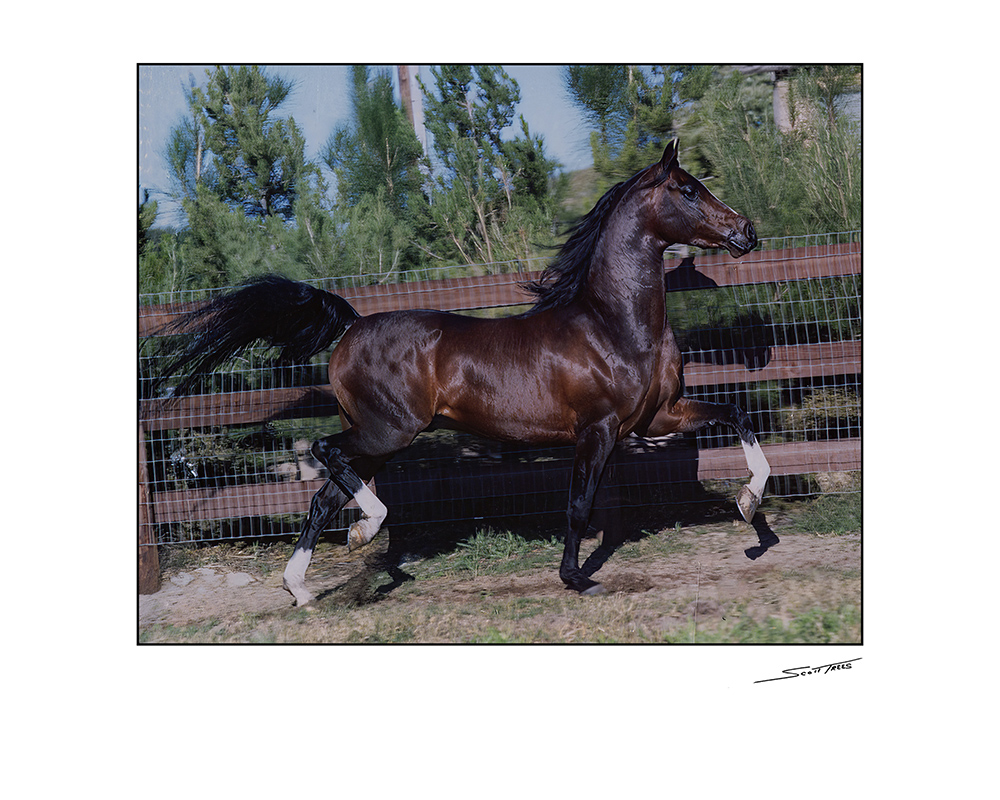
Huckleberry Bey (Bay El Bey x Taffona), owned by Sheila Varian
Huck was one of two horses I really seemed to connect with; there was an unspoken understanding between us. This was from my first session with Huck and this image was used as the model for his Breyer statue.
Capturing Huck’s playful persona through my lens was an enjoyable and delightful experience. Over a period of years I had the good fortune to photograph him in a variety of scenarios, each time capturing a different aspect of his vibrant personality.
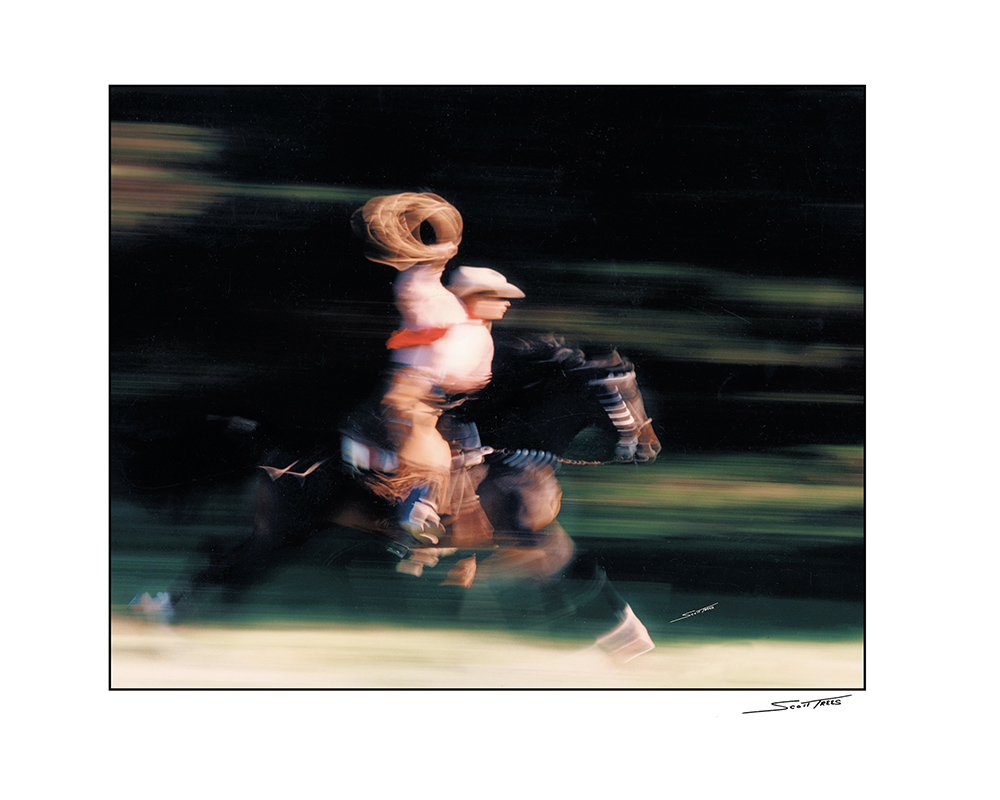
Desperado V (Huckleberry Bey x Daraska), owned by Sheila Varian
Sheila Varian was a cowgirl at heart and her spirit embodied that essence. We were going to shoot Desperado under a western saddle later in the day. Sheila wanted something different. In the course of shooting, I tried a slow-shutter technique. There is no hard and fast rule for this type of shot, however this technique worked here. Sheila loved the image and used it a lot in her promotional campaigns.
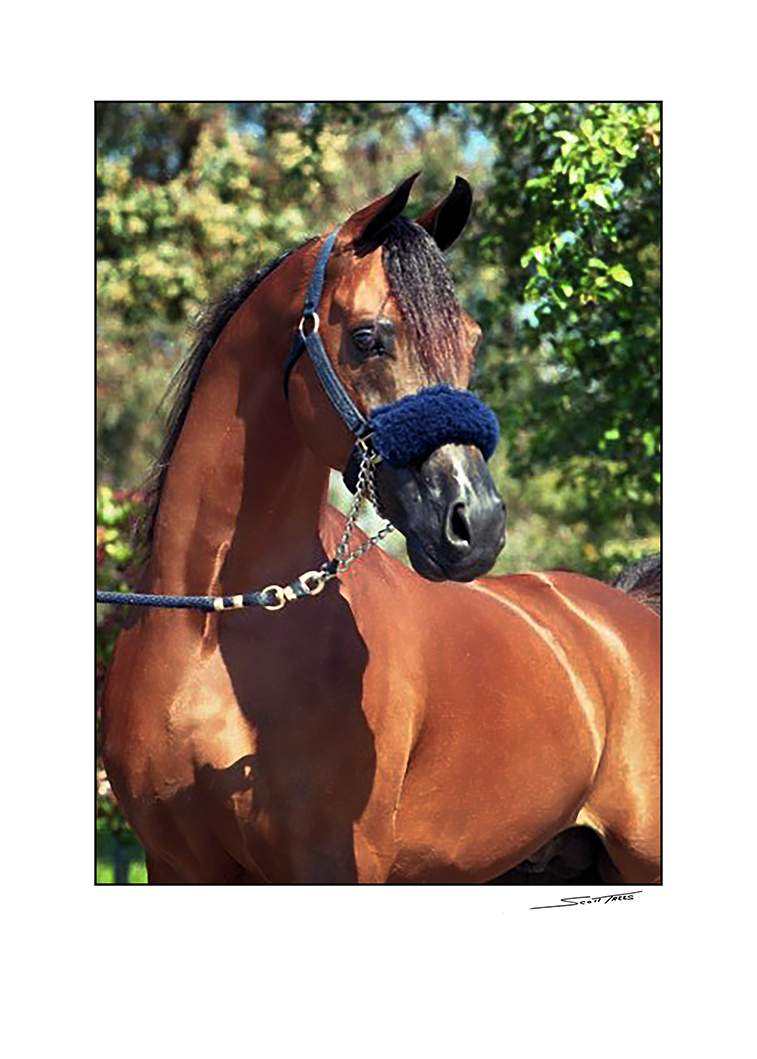
FAME VF (Bey Shah x Raffoleta-Rose), owned by RA Aloha Arabians
The other horse I connected with was Fame VF. He had a unique and magnetic charisma and his presence had the power to command attention. He thoroughly enjoyed being in front of the camera, and I captured numerous photographs of him over the years.
After winning his National Championship, his handler, Dick Adams, never put a formal “show halter” on Fame again. He used only a blue fuzzy.
This photograph was from one of my last sessions with Fame. He was a photographer's dream with his powerful demeanor and majestic aura.
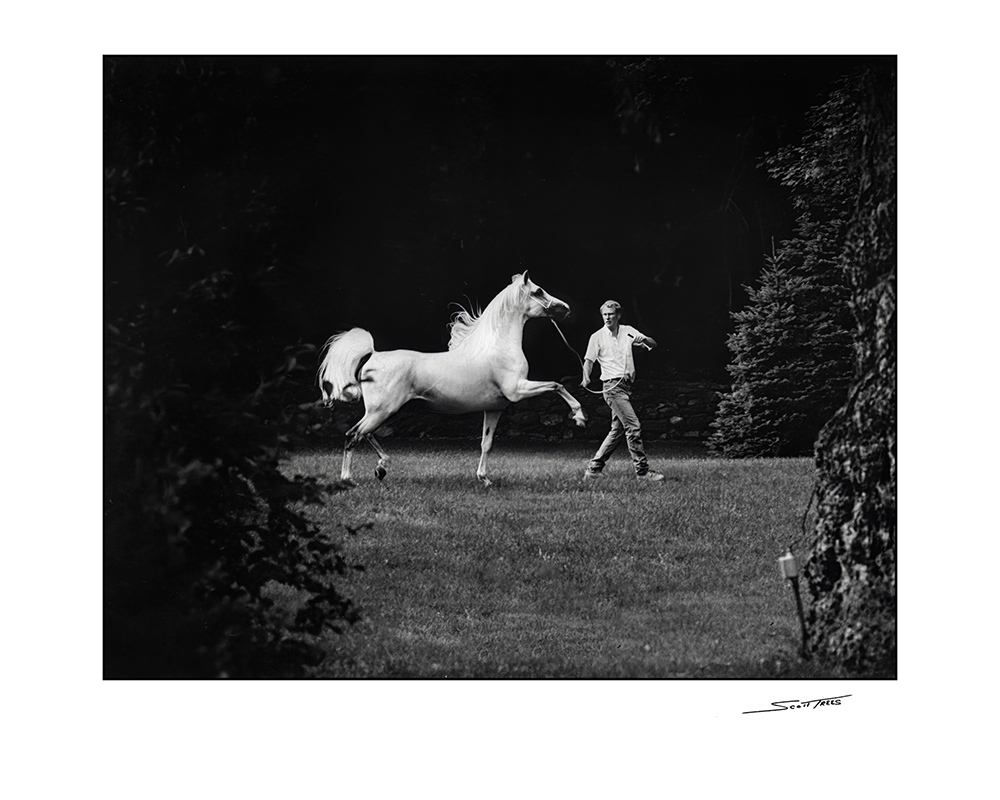
*Penitent (Partner x Penza), owned by Dunromin’ Arabians
After Dunromin' Arabians imported *Penitent from Poland, they needed images for his introductory ad in the trade publications. I wanted to compose a captivating black and white photograph because at that time 99% of the photographs in the trade publications were color.
As his handler, Larry Jones, trotted him across the grass, without warning, Penitent got a “buzz.” With each step his legs rose higher. Fate presented me with the magical convergence of perfect timing and an ideal location.
*Menes - Tersk
Aries Arabians commissioned me to photograph their newly-purchased Russian stallion, *Menes (Nabeg x Metropolia), in Tersk, Russia in 1983. I was at the Tersk State Stud farm for two weeks. Being in a communist country was a remarkable experience, and gave me a greater appreciation for all that I had taken for granted in life.
In the evenings I enjoyed following mares and foals grazing unhindered in the soft evening glow of verdant pastures. Two men on horseback would follow the herd. Meandering through the pastures one evening, I came across this steadfast sentinel as he followed the herd as a deterrent against wildlife and poachers.
I don’t look only for horses when on location...I seek captivating moments with people, too. One early morning at Tersk, morning light streamed gently through a window, casting a soft and golden hue throughout the room. Everyday this young girl watered the horses, drawing water from a well using a rope and bucket. She repeated the process, trudging up and down the long barn aisle.
This is one of my favorite photographs, and hangs in my home. People seem drawn to it, commenting about the lighting and texture being similar to a Vermeer painting.
Honestly, I can’t recall the name of the horse shot or the farm where I captured this shot. I do remember he was not on the list. There was a large and brooding stormcloud moving in that screamed to me, “white horse!” This stallion was in his paddock and had not been bathed or clipped.
I hastily captured a few shots as he looked at a group of mares, his eyes, both watchful and entranced, reflected a depth that held my gaze in that brief instant of seeing and feeling “the” shot before releasing the shutter.
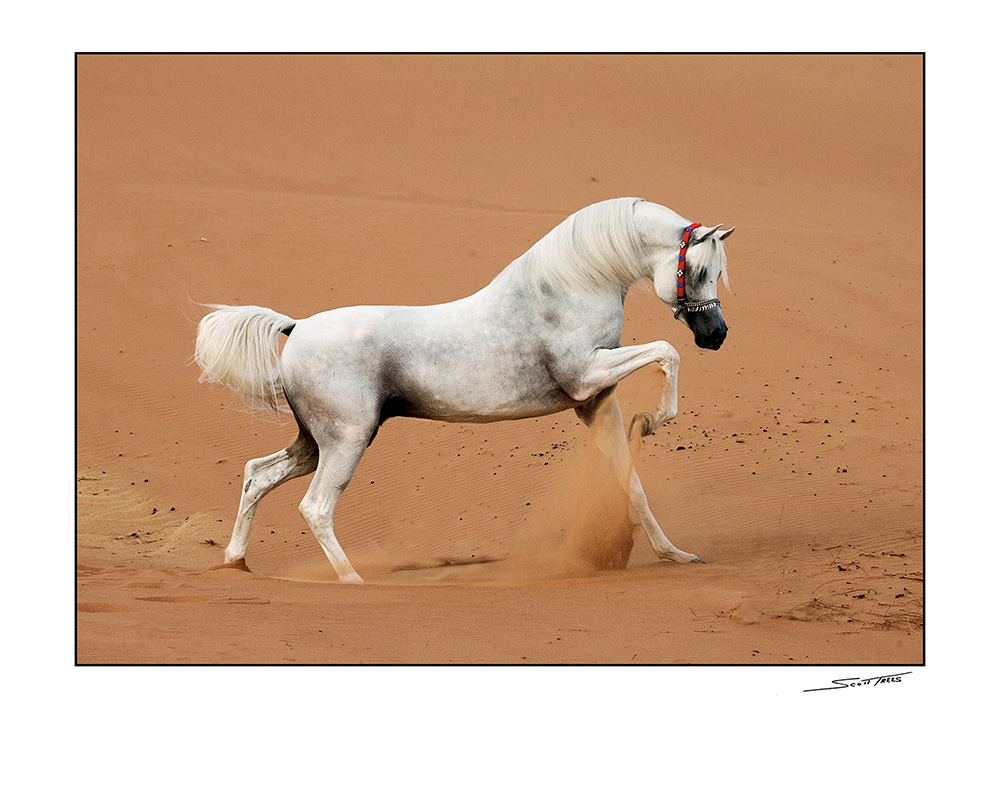
Escape Ibn Navarrone-P (AS Sinans Pacha x Navarrone)
Escape was an exciting stallion. He radiated an assertive aura and personality that would challenge any contender approaching his space. He was very predictable that way, which made for exciting photographs.
In a desert outside Dubai, I found the ideal location and selected the time of day for my desired light. Escape usually bowed up and would strike out when a tease stallion would approach him, but it was all for show.
This was taken for Dawn Martin of Albidayer Stud. We scouted for an entire day in search of evocative and safe locations for the stallion Tammam Albadeia (Simeon Sharav x Tamimat Albadeia).
After preparation and with great anticipation, Dawn let him go. I was hoping for an intriguing expression in a new environment. He did absolutely nothing. In fact he was being a real jerk.
Sometimes I use a large reflector to enhance lighting, and I tossed it at him frisbee style, hitting him softly in the side. He jumped, kicked at it, turned around, then reared. I have always said, “The only thing predictable about a horse is their unpredictability.” He proved it that day.
The idea was to turn a horse loose coming over a dune. The perfect model was Esta-Shama (Ibn Estasha x Sadika), owned by HH Sheikh Mohammed bin Saud Al Qasimi Whatever direction you led her, when turned loose, she would come back on the same path. This was important because we were turning her loose in a rather large desert area with no fencing.
When the light was right, we turned her loose and she moved exactly as anticipated. At the very edge of the dune, she paused before descending.
 Marajj (*Marwan Al Shaqab x RGA Khouress) owned by Albidayer Stud
Marajj (*Marwan Al Shaqab x RGA Khouress) owned by Albidayer Stud
Same area, different day, with a not-so-predictable young stallion. Fortunately, Marajj was young, had not yet bred a mare, and was very good natured.
To get him to return to the dune I wanted, we had a mare in heat at the bottom of the dune surrounded by people and two riders on chase horses in case he took an unexpected detour.
The air crackled with excitement and uncertainty as he was walked about 25 yards from the point I wanted him to cross the dune. With the halter removed, Marajj was unleashed, free to gallop without restraint.
Fortunately, it was in the right direction coming towards and down the dune. Everyone breathed a sigh of relief, especially me!
This started off as a headshot of the filly standing in the water with a halter on. Dawn Martin actually swam this filly, Baila De Djoon (Ajman Moniscione x Shak Shakira), out into an ocean bay, wearing a full abaya (because it was the UAE), and turned her loose. I was standing chest deep in the water, and shot this as she swam back to her friends on the shore. Later at dinner with a group of friends, we found out that area had sharks!
In terms of the ideal Arabian horse, for me it would be *Haracz (Palas x Harmonia). He was a beautiful and charismatic stallion with a magical air about him. I always felt his energy was the closest to what I imagined a unicorn’s would be.
It's not just Arabian horses. For the last 15 years I have been the lead instructor, working with several other talented instructors, for my favorite workshop sponsored by the Equine Photographers Network held at the Sombrero ranch in Craig, Colorado. It's a full week of real-deal ranch hands, who embody the authentic spirit of ranch life.
This scene was one of the setups for workshop participants. I chose to shoot in black and white, and was able to capture this moment of hesitation. In that instant, the ponied horse's hesitation hung delicately in the balance, before it leapt over a sagebrush.
This photograph was an action category winner in “Cowboys and Indians” magazine.
Finally, if you asked me of all the shots I have taken over the years which is my favorite, it’s this one. Mainly because I really like heavy horses, and it was the culmination of an exceptional week of shooting in Poland in 1994.
I was in Janow and spent the day exploring the village, which is steeped in the history of the Arabian horse. I met and photographed the occupants who gracefully endured the intrusion of a camera held by a foreigner who did not speak their language. In spite of that we managed to communicate just fine.
Late that afternoon, I was resting when the eclectic owner of the equally eclectic B&B lodgings, Majik Falcowitz, came charging up the stairs and yelled, “Scott, kona (horse), come, we go!”
We jumped into his car and pulled behind a draft horse and a time-worn wagon full of hand-loaded hay. Walking into the ancient courtyard, the farmer had already unhitched his imposing Belgian. Majik related to the farmer my desire to photograph his horse. His face burst into joy saying, “Moment!” He went to his house and returned with his wife and daughter in tow. Clearly, he thought I wanted to photograph his family with the horse. The pride and heart of the Polish countryside showed through as I shot various poses of the family, and then the farmer with what was clearly his pride and joy.
After the photo session I gently took the reins and walked this gentle giant away from the barn, turning him loose to walk back towards the barn. I hoped to capture the horse's strides as he made his way toward the aged and weathered barn. He turned into his stall next to the wagon, clearly fatigued. At the last minute he slowly reached over and took a well-deserved mouthful of hay. After all, he earned it. It was an exceptional way to end the day.


